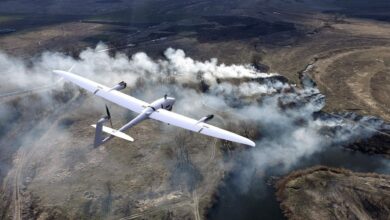UK Military Ground Drone Trialed for Scanning Hazardous Environments
The UK Defence Science and Technology Laboratory’s (DSTL) hybrid area reconnaissance and survey (HARS) ground drone has completed a five-week field trial at Salisbury Plain.
The demonstration was conducted to validate the platform’s uncrewed capabilities in surveying environments with hazardous materials.
“This technology offers an innovative approach, which could significantly change the military’s capabilities in the future by reducing the hazard to soldiers and acting as a force multiplier,” DSTL HARS Trial Lead Scientist Andy Martin said.
During the test, the laboratory deployed a Viking ground drone carrying chemical and radiological sensors.
The payload included two mass spectrometers, two vapor sensors, and a gamma radiation spectrometer for detecting ground-based chemicals, volatile chemicals, and radioactive hazards.
“Some of the key challenges associated with the system are reducing the cognitive burden for personnel and using sensors, which are designed to be manually operated by personnel, applying sufficient automation in the system to allow that to be done remotely and autonomously,” Martin said.
“It has been nice to see it actually in practice, moving around out in the field and demonstrating that this is somewhere that, if we continue to put some work into it, we could make some real progress and do things very differently to the way they’re done now,” a DSTL operational analyst added.
‘Less Risk to Personnel’
The British Army’s Falcon Squadron, 28 Engineer Regiment worked alongside scientists during the field trial in comparing the performance of uncrewed systems with ground drones.
“This trial is important because it is working with future technologies so hopefully we will be able to have more time on target, less risk to personnel and better capability to detect whatever is there,” a Falcon Squadron official said.
“This has been a great example of the Ministry of Defence, industry, and end users working together with the expertise from DSTL and the stakeholders able to influence the systems we’re developing,” Chief Engineer Andy Maloney added.












